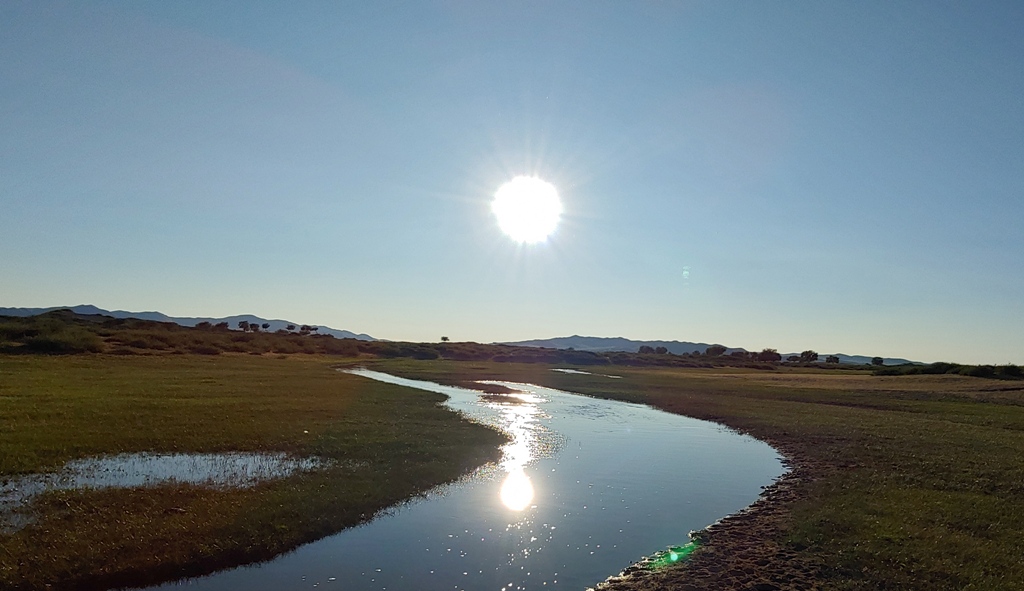
How do I describe the land of blue sky and the nomadic people who left an imprint on my soul? There are moments when I still yearn to be bouncing across the Mongolian steppe in a Russian van not knowing what lay ahead or around the next hill. I loved Andrew’s happy squeal and laugh as our driver, Togo, honked at the herds of goats and sheep blocking our path. Then there is the memory of the scenery. Looking out the van window one catches an occasional glimpse of a round white Ger, a leisurely grazing camel, or a lone nomadic horseman carrying an urga – a circle of rope attached to a long pole for lassoing animals. To say that I loved the freedom of the sprawling expanse of Mongolia would be an understatement.
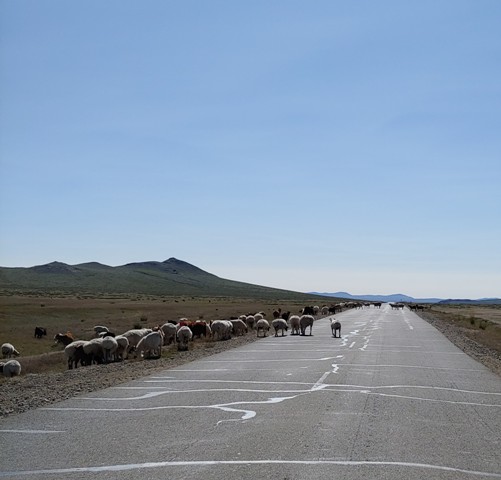
The Land of Blue Sky
Mongolia is called the land of the blue sky because the deep azure, blueness is as vast as the land that it covers. Ulaanbaatar, Mongolia’s capital, is home to 1.5 million inhabitants which is half of the country’s population. Immediately outside this modern urban sprawl one can see a few farms with planted fields and fences marking property lines. At first encounter, this type of landscape is not questioned since fences and borders are an integral part of the western world. Why would we expect anything different? However, upon returning from inner Mongolia, the farms, the fields and the fences look out of place and strangely sad after experiencing the nomads unhindered ebb and flow of daily life.
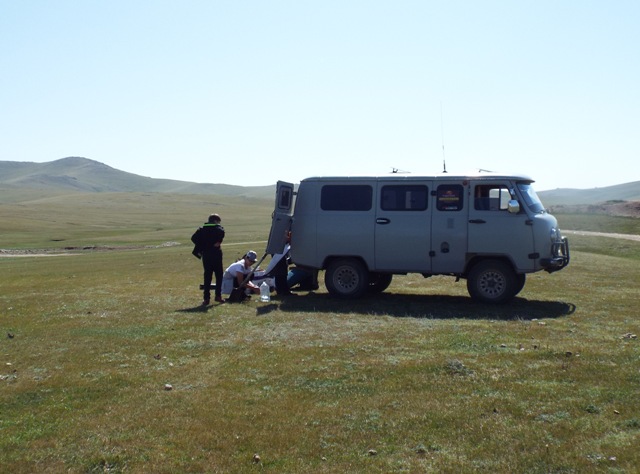
The Roads Less Traveled
The roads that lead away from the urban spread of Ulaanbaatar are paved but soon give way to the steppe – a biome of grasslands. The scenery suddenly becomes one fragrant hill that rolls gently to the next. On the steppe there are more animals than people and the countryside is unmarred, totally void of signage and directions. Drivers, we discovered, just know where they are going. Roads consist of dusty trails left by a previous vehicle or a dirt tracks that turns into multiple ruts left by drivers trying to find the least bumpy path.
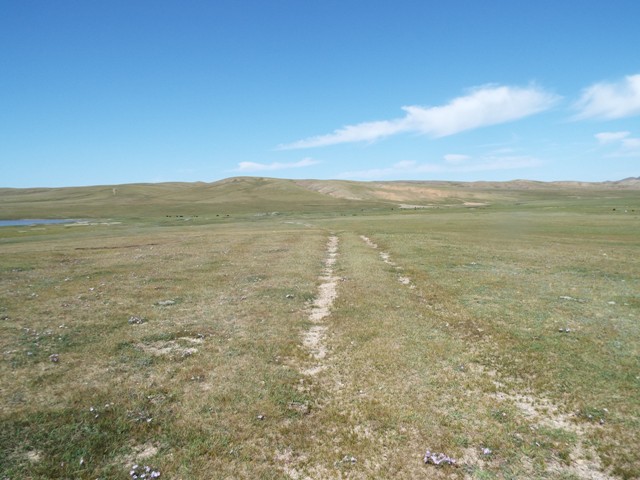
The Freedom to Explore
Mealtimes were a welcomed reprieve from the bouncing and jostling of the van. To stretch our legs we would explore the hills where singing grasshoppers would quickly jump out of our way. I had no qualms about letting Andrew take off and explore the surrounding area making sure that he knew to keep the van in sight. At times, he would be just a tiny spec on a hillside. He was now two weeks post-surgery. A week before our departure to China, Andrew had flex nails removed from his leg that had been broken in a skiing accident. I could tell his leg was healing and getting stronger. Anytime Andrew tired, he would flop down and lay on the hillside staring at the sky or observe insects in the grass. What a perfect country for a traveling 12-year old!
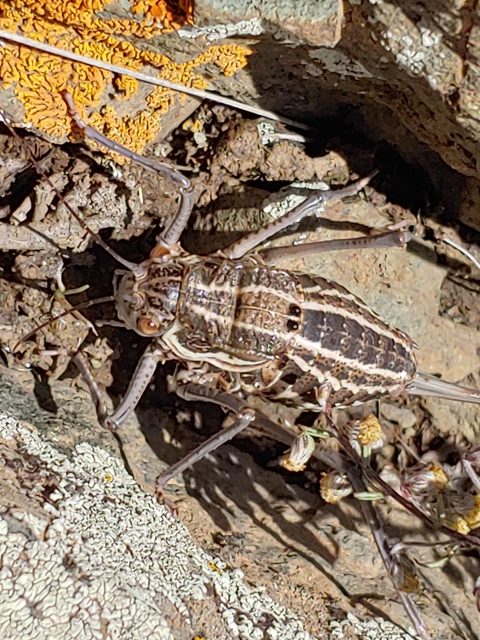
The Nomads of the Steppe
The nomadic pastoral way of life shapes the culture and customs of Mongolia. Roaming herds consist primarily of goats and sheep, but yak, camels and horses are also numerous. The animals and their owners are relationally entwined, each being dependent on the other. The nomadic families of the steppe move with their animals to seasonal grazing pastures. The animals provide the Mongolian family with almost everything they need to survive the harsh weather of their country. The nomad’s skill on horseback is essential for guiding their herds and to say that they are skilled horseman is an understatement. Young Mongolians, have brought modern methods to their families. It was not uncommon to see a lone motorcyclist rounding up animals on the hillsides.
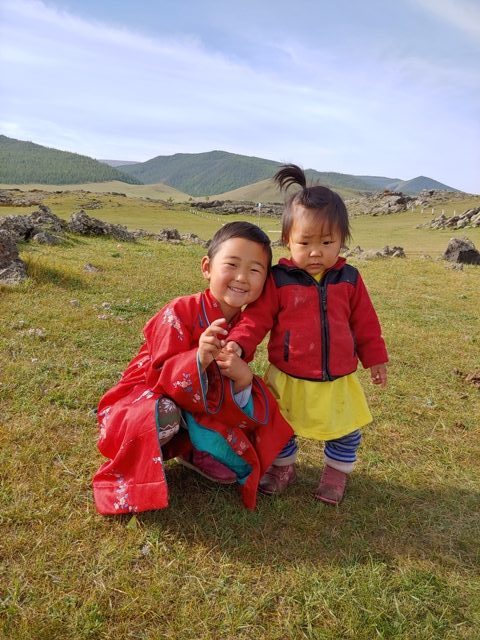
The Language Barrior
The Mongolian people are fiercely strong, yet gentle, open, and inviting. We were honored that they would take us into their homes and allow us a glimpse of their daily routines. Andrew and I learned some polite Mongolian phrases so that we could greet our nomadic hosts. But oh, how I wished I could have just spoken with fluency. I wanted a deeper more intimate understanding of the people and the culture but had to rely on visual understanding. Nemka, our guide was a good translator and awesomely patient. Still, there is nothing like conversing one on one.
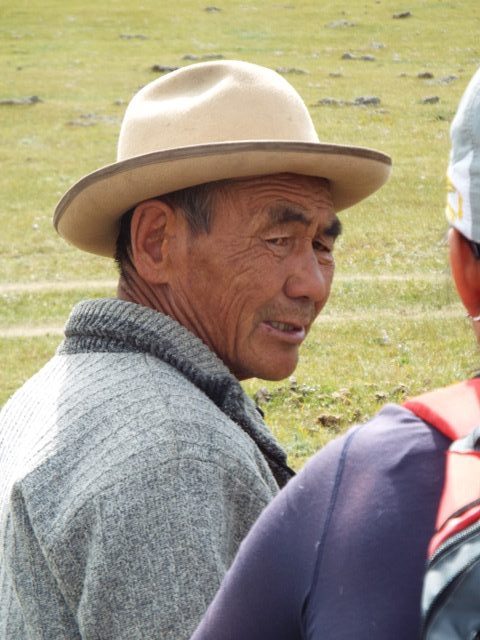
Why Mongolia?
Mongolia is the second sparsest populated country on earth. (Greenland is the first.) I am often asked, “Why Mongolia?”. To which I respond, “Because in our studies, I knew that Andrew did not fully understand the concept of the nomads.” He does now.


